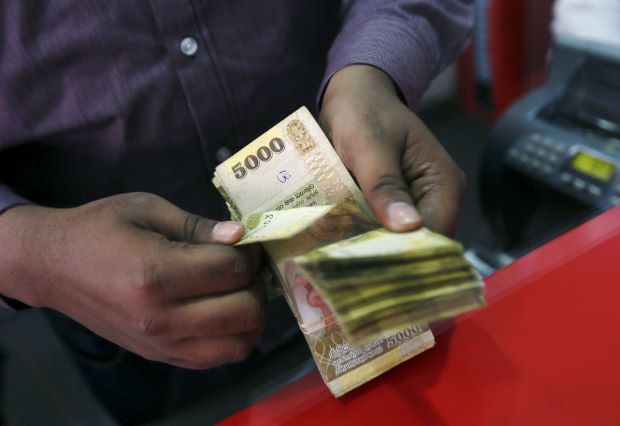Restructuring Sri Lanka’s debt talks
By Soumya Bhowmick
There is no doubt that International Monetary Fund (IMF) loans often come with a set of conditionalities that most countries find unfavourable to implement. With its ongoing economic crisis and complex multilateral debt negotiations between creditor nations, Sri Lanka is no exception.
The IMF extended a loan of US$ 2.6 billion to Sri Lanka in 2009 on the condition that Colombo reduces the country’s budget deficit to around 5% of GDP. But the island nation failed to improve its exports or growth, so it requested another IMF debt facility of about US$1.5 billion in 2016. That was also ineffective due to internal issues ranging from multiple monsoon failures derailing agricultural productivity to the politically destabilizing constitutional crisis of October 2018.
Between 2015 and 2019, the country’s growth rate fell from 5% to 2.9% and government revenue contracted from 14.1% to 12.6% of GDP. The bitter coincidence of falling output and revenue made Sri Lanka reluctant to seek an IMF bailout in the early stages of its 2022 sovereign debt crisis — diminishing its options to avert the current economic disaster.
The COVID-19 pandemic has been harsh for the entire South Asian region, with countries seeking hefty assistance from the IMF. Apart from Sri Lanka, the IMF has approved a loan tranche of US$ 1.17 billion to flood-hit Pakistan. Bangladesh formally requested an IMF loan of US$ 4.5 billion in June 2022 due to inflationary pressures, a volatile taka and depleted foreign exchange reserves.
Given the interconnectedness of global value chains and the regional economy, Sri Lanka’s recent economic woes cannot be understood in isolation.
In early April 2022, Sri Lanka declared it would default on its external debts comprising International Sovereign Bonds and syndicated and bilateral loans worth approximately US$ 51 billion. It then awaited a bailout from bilateral and multilateral creditors.
The subsequent months saw a humanitarian disaster and massive civil unrest that triggered the resignation of Sri Lankan government ministers, including the president, Gotabaya Rajapaksa, and the prime minister, Mahinda Rajapaksa. Sri Lanka reached a preliminary agreement with the IMF for a US$ 2.9 billion loan in early September 2022. It requires Sri Lanka to restructure all of its debt held by external and private creditors.
On the request of Sri Lankan President Ranil Wickremesinghe, Japan will lead the debt restructuring talks with creditor nations. Japanese Finance Minister Shunichi Suzuki emphasized the role that bilateral creditors like India and China should play in dragging Colombo out of its worst economic crisis since gaining independence in 1948.
The restructuring of Sri Lanka’s debt held by India and China provides Sri Lanka with a certain amount of leverage in the IMF negotiations. Interestingly, this also reflects the changing regional dynamics of the last few years. Sri Lanka is of strategic interest to China for its trade and infrastructure connectivity in the Indian Ocean region as part of the Belt and Road Initiative (BRI). It became more crucial after India announced its non-participation in the BRI.
China has been accused of engaging in debt-trap diplomacy with Sri Lanka, especially after the Hambantota Port incident in which the China Merchants Port Holdings Company paid $US 1.12 billion for an 85% share in the port on a 99-year lease in 2017. But in the post-pandemic world, the BRI, like China’s general dedication towards Sri Lanka, is losing steam.
India and Sri Lanka’s bilateral ties have seen an uptick in the recent past — they boast the largest trade relationship within the South Asian Association for Regional Cooperation. According to India’s Ministry of External Affairs, India provided Sri Lanka with unprecedented crisis support to the tune of US$ 3.8 billion in the first half of 2022, in line with its Neighbourhood First policy.
Japan’s unbiased leadership in the debt restructuring talks is crucial to achieving a positive outcome considering the diplomatic tensions between India and China. These tensions range from border skirmishes in Ladakh and Sikkim to the recent Indian crackdown on Chinese firms for ‘financial crimes detrimental to [India’s] financial security’.
India marginally surpassed China in 2022 to become Sri Lanka’s largest bilateral lender. But the resolution of Sri Lanka’s debt relief talks needs to spread the debt relief costs across all the creditor nations, with India now holding a larger stake in the process.
As Sri Lanka graduated from a low-income country to a low-middle-income country in the late 1990s, its access to concessionary loans declined. They were replaced by commercial loans with unfavourable conditions such as higher interest rates and shorter repayment durations.
Commercial loans, mostly denominated in International Sovereign Bonds, were often used to fund the economy’s current account deficits, adding to Sri Lanka’s macroeconomic vulnerabilities. Sri Lanka’s recovery efforts need to address the long-term precarity of this external debt structure.
While the world braves the macroeconomic impacts of the pandemic, the Russia–Ukraine conflict adds soaring fuel prices and food insecurity to the list of problems faced by the Global South. That volatility underscores the importance of a careful and swift recovery for Sri Lanka.
-Soumya Bhowmick is an Associate Fellow at the Centre for New Economic Diplomacy, Observer Research Foundation and this article was initially published by East Asia Forum



Comments are closed, but trackbacks and pingbacks are open.